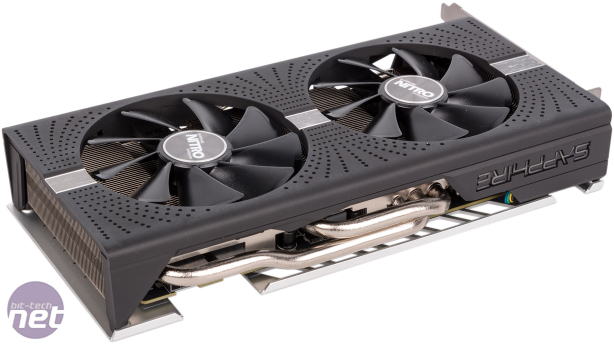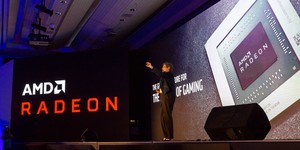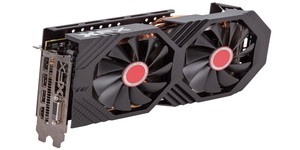Performance Analysis
The difference in performance between this and the Asus RX 580 Strix Top OC is less than one percent – unsurprising given their clock speeds are identical. Asus was able to maintain its boost speed more often, with this Sapphire card tending to average around 1,370MHz instead of the peak 1,411MHz. Still, the real-world differences are meaningless and unnoticeable. Another interesting point of comparison is last year's RX 480 Nitro+ OC, which this newer card betters by three percent on average. It's the same GPU clocked five percent higher, so this figures.Given that performance is virtually identical to the Asus card, our analysis is likewise similar. AMD positions the RX 580 8GB as suitable for 1440p gameplay with high settings, and it's wise to do so. In our games, only one dropped below 30fps on the minimum frame rate at this resolution, and that's with ultra settings across the board. The comparison on Nvidia's side is of course the GTX 1060 6GB, with which the RX 580 trades blows – sometimes losing, sometimes winning – but seems to emerge as the better choice in games with modern APIs like DirectX 12 or Vulkan. This, plus its 2GB larger frame buffer, means it's potentially more future-proof than the GTX 1060 is at this point.
While the Asus RX 580 Strix card maintained its boost speed of 1,411MHz most of the time, it actually consumed less peak power by about 20W, suggesting that Sapphire's PCB/fan/lighting design is somewhat less efficient. This is true of the RX 580 generally, too; pushing the Polaris silicon this hard has wiped out the efficiency gains AMD was starting to make, and this card is in similar territory to GTX 1080 cards, which is a bit of a blow given that Nvidia's beast outperforms this in the region of 70 percent or so.
Sapphire has clearly opted for a fan curve that prioritises noise over temperature. In our tests, the GPU hovered at around 74°C for a delta T of 58°C, which is quite high, and much higher than we saw on the Asus card, which is to be fair monstrous in size. In return, however, fan speeds are well controlled, with the PWM signal staying at around 25 percent for a fan speed of 1,000 RPM or less, which was not audible in our rig. We like this approach, as 74°C is not an especially unhealthy temperature to run long term. You're also free to customise the fan curve and target temperature in Trixx or AMD's own Radeon WattMan utility if you feel differently.
Overclocked, the card maintained the 74°C core temperature, so this seems to be a fixed target (WattMan should allow you to increase it, though), but the card had to more than double its fan speed to maintain it on account of the extra voltage, and power consumption was higher too: 356W for the system. Overclocking the RX 580 is not an efficient process by any means, but we did net ourselves a performance boost of between eight and 12 percent – whether the trade-off is worth it or not will be for you to decide.
Conclusion
Offering all of the performance of the Asus RX 580 Strix Top OC card for £60 less, the Sapphire RX 580 Nitro+ 8GB looks strong, although using the Asus card as a benchmark for good value is a fool's errand; this card may not be quite as well-cooled, feature-rich, or efficient, but the gap still isn't enough to justify Asus' asking price.What you do get is a relatively compact card with some basic RGB lighting, VR-friendly display outputs, a decent out-of-box overclock, and a cooler that's very quiet by default but flexible in how you choose to configure the fan curve. The Quick Connect fan system is also a neat little touch. At £250, this card is only £10 more than basic RX 580 models, and RX 480s are hardly any cheaper, so it makes sense to opt for the newer and ever-so-slightly faster current generation cards unless you find a bargain somewhere.
The GTX 1060 actually has a number of SKUs that undercut this card on price by £20 or so, but they tend to be ITX or single fan coolers; those with comparative coolers and features to this card typically cost just as much if not a little bit more. Still, efficiency is Nvidia's big win here, so if heat/power/noise are primary concerns, the GTX 1060 should give you pause for thought – it would definitely be our choice if we were going for a tiny build. That said, the RX 580 has 2GB more VRAM to boot and tends to fare better in DirectX 12, pointing to potentially better longevity. Whatever your choice, at £250, this Sapphire card makes a good enough case for itself.


MSI MPG Velox 100R Chassis Review
October 14 2021 | 15:04













Want to comment? Please log in.